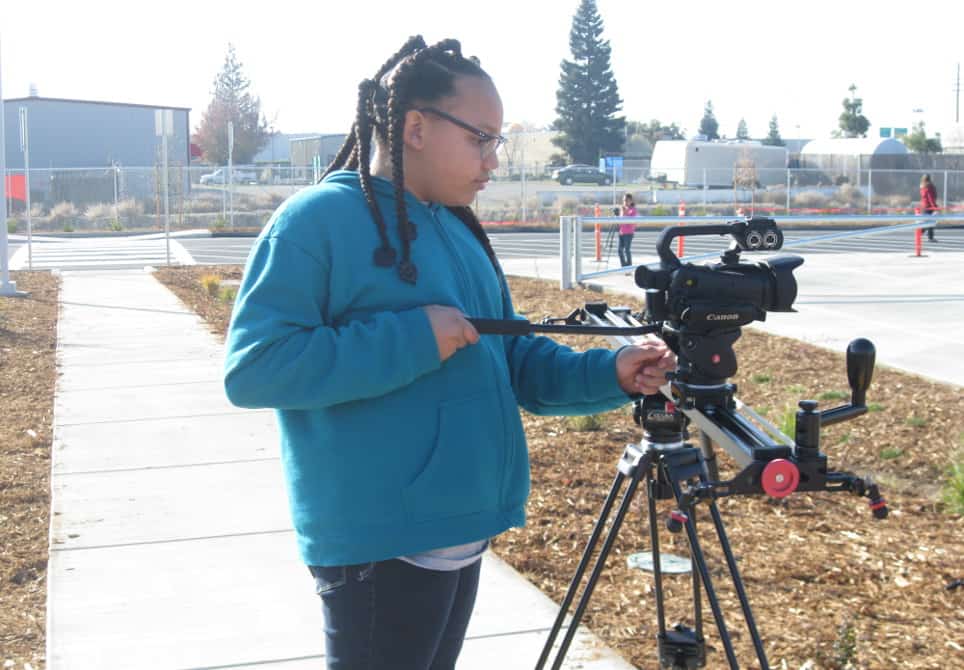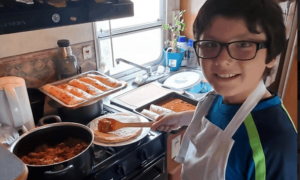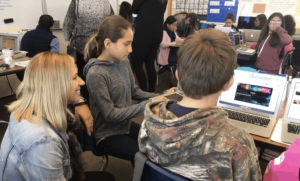3 Tips for Planning Authentic PBL Projects

Jim Bentley
Let’s assume you’ve received some training on project-based learning (PBL) and you’re planning your first PBL unit. You want this to be awesome! You’ve got standards you know you want to teach. And you want to make sure the project feels engaging, real and authentic.
The question you’re now grappling with is this: How do I design real authenticity into a PBL unit?
John Larmer wrote an excellent blog post laying out four key characteristics of an authentic project shown below.
- It meets a real need in the world beyond the classroom or the products students create are used by real people.
- It focuses on a problem or an issue or topic that is relevant to students’ lives—the more directly, the better—or on a problem or issue that is actually being faced by adults in the world students will soon enter.
- It sets up a scenario or simulation that is realistic, even if it is fictitious.
- It involves tools, tasks, standards, or processes used by adults in real settings and by professionals in the workplace. This criteria for authenticity could apply to any of the above examples of projects.
Sam Seidel has an equally important post in which he highlights the need to make projects culturally authentic. So how does a novice or veteran teacher design authenticity into a project?
1. Assess Your Community Through Your Students’ Eyes
For my PBL units focusing on teaching civic engagement, the design of projects actually starts with students. I ask them a simple question: What bugs you about our community?
I hang chart paper around the room, encourage students to discuss what bothers them within our community, and to briefly record their ideas. Over the years a range of issues have surfaced: street racing, dog fighting, landscape blight, pollution in drinking water, closing of school libraries, school budget cuts.
The topics that emerge are both personally relevant and student centered. By using a consensus building approach, students select one of the topics to study in depth. You can check out two projects my students tackled using this process. With “Energy: Save Don’t Waste” students looked at ways our school district could save money in order to avoid painful budget cuts. With “Library Technicians: Keep or Delete?” students explored ways our school district and teacher’s union could collaborate to avoid laying off librarians and closing libraries.
2. Begin With The End In Mind
Think about how your students could showcase their learning as a result of a PBL unit then work toward that end.
Our classroom emphasizes the use of filmmaking across the curriculum. That’s why my students regularly create math tutorials for our YouTube Channel. And my students realize that by engaging in a project that’s intended for an audience other than me, the teacher, their work will authentically be consumed by others.
Three years ago, one thing that bugged my students were the arguments that erupted at recess during games of four square. The issue was studied. The rules were reviewed. A decision was made by a team of students to create a film to educate their peers: How to Play Four Square the Right Way was the result. That film has had close to 30,000 views and has 49 comments made by kids from around the world.
When students know that their project presentation is more than just a presentation: they are encouraged to produce a professional, high quality piece of work for the world to consume.
If filmmaking isn’t your thing, students can still display their work publicly. My 5th graders are beginning to blog with their student Edublogs. They’re also just starting to learn how to use Easel.ly to build infographics to share ideas. It’s free, intuitive, and easy to use. Upper grade students can audio record an interview and quickly and easily edit it using Audacity, an open source audio editing software.
What about younger students?
Take a look at how 2nd graders in Ms. Trowbridge’s class at Katherine Smith Elementary are showing off their work as they “Dig for Dinos” by combining pictures with a summary of learning.
3. Build Partnerships With Groups Outside Your Classroom
Several years ago, my students were concerned about groundwater pollution caused by the improper disposal of batteries. They reached out to our city’s integrated waste department to propose a solution: make schools in our district battery drop off sites.
We met with our city’s integrated waste manager and learned this would not be a viable solution due to safety issues posed by batteries. But we were offered a chance to collaborate to produce an instructional film educating citizens of our community how to safely package and transport their household hazardous waste to our city’s soon-to-be-built special waste collection center. Students produced an award winning educational film as well as a film about the project.
As you design a project, think about who might benefit from your students’ learning. Try to seek out strategic partnerships that could support your teaching goals and empower students to learn for an authentic purpose.
Redefining the Classroom
Classrooms today must extend beyond four walls if we want to develop college and career ready 21st century students. We must address students’ concerns in the units we design to foster a sense of relevance. We must encourage students to both consume and produce information to promote communication of what’s been learned. And by sharing our students’ work with the world at large, we transform the very purpose for learning from a solitary experience to a collaborative journey.
This post is in partnership with Buck Institute for Education (BIE) as part of part of a blog campaign titled Getting Smart on Edu Blogging. BIE national faculty are writing about how project-based learning (PBL) is engaging students and transforming classrooms and schools. To engage in professional learning about PBL, check out the upcoming conference, PBL World in Napa Valley June 13-16 and join in the conversation using #PBLWorld. For more, see:
- 4 Ways to Promote Growth Mindset in Project-Based Learning
- 7 Ways PBL World Models Project-Based Learning
- Getting Smart Podcast: Project-Based Learning Connects Real World with Deep Impact
Jim Bentley is a 5th grade teacher and National Faculty for the Buck Institute for Education. Follow Jim on Twitter, @Curiosity_Films.
Stay in-the-know with all things EdTech and innovations in learning by signing up to receive the weekly Smart Update. This post includes mentions of a Getting Smart partner. For a full list of partners, affiliate organizations and all other disclosures please see our Partner page.





0 Comments
Leave a Comment
Your email address will not be published. All fields are required.